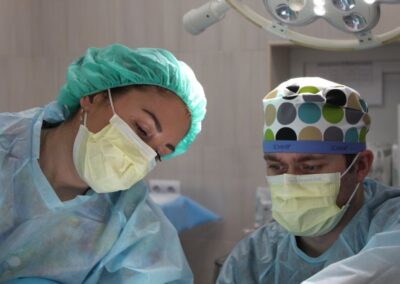Welcome back. After a three-year hiatus hanging out in the medical executive world, I am resuming my weekly blogs. There’s so much to catch up with and no shortage of material. I hope you find my postings informative, thought-provoking, enlightening, and at times, even make you smile. I always welcome your feedback.
As I sit to write again, I cannot help but reflect on our strange New Normal of the novel Coronavirus. Who would have thought even a few months ago, that we would be going through what we are experiencing now? I have seen nothing like this in my 35 years in medicine. We are truly in a time of crisis, but also in a time of opportunity. As Americans, we WILL get through this. But how do we navigate as a country and as a planet until the virus either goes away or we develop a vaccine? We have unprecedented challenges and woefully little data and experience upon which to base our decisions. Whom do we trust? What is fact and what is “fake news”? We are scared and unsure of the future. Our leaders seem to be waffling. As of today, four million Americans have contracted the virus, and almost 150,000 have died with no end in sight.
The public is craving basic information presented in a non-biased way. Simple, factual, above-board.
I have decided to devote the next several weeks to give objective and straightforward overviews of this pandemic from the perspective of a physician, an executive, a parent and a patient. So, let’s get started…
Managing through a crisis is a challenge, but it seems that this pandemic has set new levels for anxiety, politicization, dissention, and downright public anger. Meanwhile, the virus continues to create horrible carnage across our country and throughout the world.
Why is decision making so complicated in the fight against COVID?
First of all, this pandemic is new and incredibly anxiety-provoking. There is no playbook. We have no choice but to learn as we go with lives and livelihoods at stake. Our experts will change their opinions as new data emerge. But here’s the catch. Every decision made by our leaders during this time must be filtered through four interdependent (and sometimes self-serving and conflicting) lenses:
Medical
Economic
Political
Social
There is no simple medical solution, or economic solution, or political solution. Any policy or decision made on any one of these will have substantial effects on the other three. They cannot be separated. They are often conflicting.
For example, from a pure medical perspective, the shelter-in-place orders that we have just gone through may have offered the best solution to control the virus. And yes, the curve was blunted and arguably flattened during this unpopular lockdown. It bought us time to secure resources such as PPE and meds, and our health system was not permanently overloaded (thanks to incredibly dedicated health care staff). But the economic consequences of continued shutdown are catastrophic. This medical decision had clear economic implications. As we also found out, there were political, and social components to this decision. There were even medical consequences. Yes, we might have reduced COVID morbidity and mortality during this time, but we likely increased depression, substance abuse and suicide. Meanwhile, millions of Americans did not give attention to ongoing medical issues such as cancer screening or diabetes management.
Bottom line, the boundaries of these four dimensions were blurred, leading to further dissention and conflict, at a time when we as a society can ill afford either.
Additionally, being so close to an election, any policy, decision, or lack of decision, bears enormous political ramifications. Each party will downplay the successes of the other and take advantage of the opponent’s “failures”, with this “politicization” overriding the actual merits of the proposed decisions. There is no doubt that our progress against this virus, and the resultant economic consequences will be critical factors in November.
To wear or not to wear masks—is it a medical issue or has it become a social and political issue? Does mandating a mask for the public good tread too deeply on individual rights? How about one’s responsibilities to other at-risk Americans? And is wearing a mask a surrogate for which party a person belongs to?
There had been disagreement on the medical benefits of masking in the past several months- even Fauci did an about-face, but the data is now showing a decrease in transmission if social distancing is practiced and people wear masks in situations where social distancing is not feasible. Political debate abounds. At what point does the social good supersede individual preferences and party lines? Wearing a mask in public is simply the smart and responsible thing to do. (Can we legislate “responsibility”?)
Hydroxychloroquine treatment- medical or political?
Returning kids to school- medical, political, social, economic?
These are just a few examples.
Of course, COVID is a medical issue. But to winning this war will require acknowledging the contributions of all four dimensions: medical, economic, political and social.
Here’s our New Normal:
1. This Corona virus is truly novel. We still know very little about it. There will be a “fog of war” as we learn new approaches to the management of this virus. During this time public policies will change and may even appear inconsistent and incompatible. We must be comfortable living in this gray zone for the foreseeable future.
2. Any decision made by our leadership will have consequences in all four dimensions. One dimension does not necessarily have priority over another. It is imprudent for our leadership to simply look at any one of these dimensions in a vacuum. All decisions will have medical, economic, political, and social repercussions. Our President and our elected officials truly need to keep the big picture in mind, and acknowledge and manage all four.
3. One must avoid the temptation to emphasize one dimension over another, or cross boundaries for example, by turning a medical decision into a political decision. We see this debated every day on the news. It distracts us from our mission as a nation. We need to be flexible to adapt to changing circumstances.
4. We must differentiate fact from opinion. Even subject matter experts can look at the same facts and reach different conclusions. We have to be fact-driven in an environment where the knowledge is continuously evolving. I will address that in detail in a future blog.
5. Finally, this pandemic is a marathon, not a sprint. The social distancing measures, for example, do not stop with reopening. Reopening does NOT imply business as usual. We cannot drop our guard. We must be even more diligent in the future as the prevalence of this virus increases. A random exposure is more likely now than before.
Next week’s blog will take these four dimensions and examine our upcoming challenge: The facts behind flattening the curve. What are the next steps?
Thanks for reading, and as always, I appreciate your feedback and honest exchanges.




